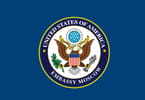In October 2020, the total monthly supply of Mgbazinye ezumike Hawaii bụ abalị 373,600 unit (-57.0%) na ihe a na-achọ kwa ọnwa bụ 85,000 unit ehihie na abalị (-86.4%), na-ebute nkezi nkeji kwa ọnwa nke 22.7 pasent (-49.1 pasent pasent).
In comparison, Hawaii’s hotels had an average occupancy rate of 19.7 percent in October 2020. It is important to note that unlike hotels, condominium hotels, timeshare resorts, and vacation rental units are not necessarily available year-round or each day of the month and often accommodate a larger number of guests than traditional hotel rooms. The unit average daily rate (ADR) for Hawaii vacation rental units statewide in October was $208, which was higher than the ADR for hotels ($174).
The state’s pre-travel testing program started on October 15, allowing passengers arriving from out-of-state and traveling inter-county to bypass the mandatory 14-day self-quarantine with a valid negative COVID-19 NAAT test result from a Trusted Testing and Travel Partner. All other trans-Pacific travelers continued to be subject to the 14-day self-quarantine. The counties of Kauai, Hawaii, Maui, and Kalawao (Molokai) also had a partial quarantine in place in October.
On Oahu, short-term rentals (rented for less than 30 days) were not allowed to operate at the beginning of October. However, when Oahu moved to Tier 2 of its Reopening Plan on October 22, legal short-term rentals were allowed to reopen. For Maui County, travelers awaiting their pre-travel test results were allowed to stay at a vacation rental as their place of quarantine. On Hawaii Island and Kauai, legal short-term rentals were allowed to operate as long as they were not being used as a quarantine location.
The Hawaii Tourism Authority's (HTA) Tourism Research Division nyere nchoputa a akụkọ site n'iji data nke Transparent Intelligence, Inc. chịkọtara. Ihe data dị na akụkọ a na-ewepu kpọmkwem nkeji a kọrọ na HTA's Hawaii Hotel Performance Report na Hawaii Timeshare Quarterly Survey Report. N'ime akụkọ a, a kọwapụtara mgbazinye ezumike dị ka iji ụlọ mgbazinye, ngalaba condominium, ime ụlọ nkeonwe na ụlọ nkeonwe, ma ọ bụ ọnụ ụlọ/oghere nkekọrịta n'ụlọ nkeonwe. Akụkọ a anaghị ekpebi ma ọ bụ ọdịiche dị n'etiti nkeji anabatara ma ọ bụ enweghị ikike. A na-ekpebi "iwu kwadoro" nke ụlọ mgbazinye ezumike ọ bụla na-adabere na mpaghara.
Isi ihe n'agwaetiti
N’ọnwa Ọktọba, maui County had the largest vacation rental supply of all four counties with 138,500 available unit nights, which was a decrease of 53.5 percent compared to a year ago. Unit demand was 29,051 unit nights (-87.6%), resulting in 21.0 percent occupancy (-57.6 percentage points) with an ADR of $227 (-36.2%). Maui County hotels were 14.2 percent occupied with an ADR of $226.
oahu vacation rental supply was 96,500 available unit nights (-59.4%) in October. Unit demand was 26,300 unit nights (-84.6%), resulting in 27.2 percent occupancy (-44.3 percentage points) and an ADR of $173 (-32.7%). Oahu hotels were 22.0 percent occupied with an ADR of $158.
The Isuo nke Hawaii vacation rental supply was 80,000 available unit nights (-61.7%) in October. Unit demand was 17,416 unit nights (-86.7%), resulting in 21.8 percent occupancy (-40.8 percentage points) with an ADR of $192 (-26.3%). Hawaii Island hotels were 19.8 percent occupied with an ADR of $140.
Kauai had the fewest number of available unit nights in October at 58,500 (-52.5%). Unit demand was 12,300 unit nights (-86.1%), resulting in 21.0 percent occupancy (-50.6 percentage points) with an ADR of $261 (-34.2%). Kauai hotels were 21.3 percent occupied with an ADR of $212.
#mmegharị njem























